Exploring the Pasifika Museum Nusa Dua
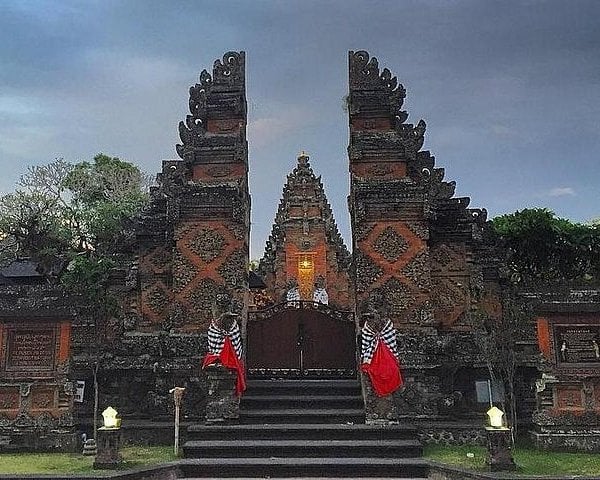
Exploring the Pasifika Museum Nusa Dua. Located in the heart of Bali’s luxurious Nusa Dua area, the Pasifika Museum stands as a cultural gem that often surprises visitors with its vast collection of artwork from across the Asia-Pacific region. While Bali is typically known for its stunning beaches and vibrant culture, the Pasifika Museum offers a unique opportunity to dive deeper into the artistic heritage not just of Bali, but of the broader Asia-Pacific region, with a particular focus on the cross-cultural influences that have shaped the island.
Opened in 2006, the Pasifika Museum features over 600 works of art by both local and international artists, representing the rich artistic traditions of countries such as Indonesia, Polynesia, Micronesia, and Indochina. Visitors are taken on a visual journey that spans continents and cultures, exploring the interplay between Eastern and Western influences. The museum offers a tranquil, air-conditioned space, providing a calm retreat from the tropical heat while offering an enriching experience for art and history lovers alike.
In this article, we’ll explore what makes the Pasifika Museum such a must-visit attraction in Nusa Dua, diving into its history, its collections, and why it should be on your Bali itinerary.
1. The History y and Vision Behind the Pasifika Museum
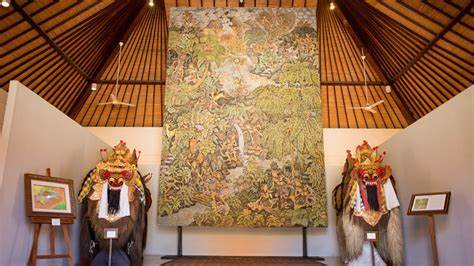
The Pasifika Museum was founded with the vision of showcasing the vibrant and diverse cultures of the Asia-Pacific region, highlighting the historical and artistic connections between different islands, nations, and cultures. It was established by Moetaryanto P. and Philippe Augier, who sought to provide a cultural hub where visitors could appreciate the region’s unique blend of indigenous and colonial influences.
Nusa Dua, known for its luxurious resorts and pristine beaches, may seem like an unusual location for an art museum, but the Pasifika Museum fits seamlessly into the upscale and serene atmosphere of the area. The museum’s founders believed that Nusa Dua, with its international appeal, would be an ideal location to present works from across the globe, emphasizing Bali’s position as a meeting point between East and West.
The museum is designed to appeal to both casual visitors and serious art enthusiasts, offering something for everyone. Whether you have a deep interest in art history or simply wish to explore the rich cultural heritage of the Asia-Pacific region, the museum provides an accessible and enriching experience.
2. A Diverse Collection of Art and Artifacts
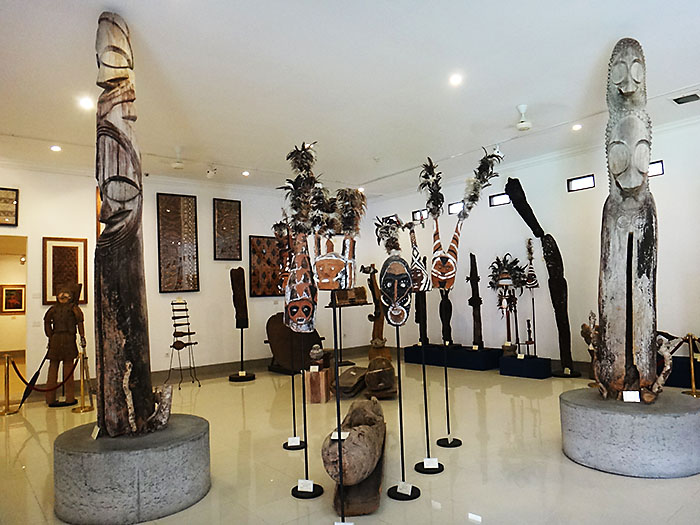
The Pasifika Museum houses one of the most extensive collections of Asia-Pacific art in Southeast Asia, and it’s divided into several thematic galleries that cover a wide range of artistic styles, periods, and cultures. As you walk through the museum, you’ll encounter works by celebrated Western artists who were inspired by Bali, as well as traditional art and crafts from indigenous cultures across the region.
Here’s a closer look at some of the key collections you’ll find at the Pasifika Museum:
2.1. Bali Through Western Eyes: The Influence of European Artists
One of the most fascinating aspects of Bali’s artistic heritage is its long history of attracting European artists who were drawn to the island’s natural beauty and rich culture. In the early 20th century, Bali became a haven for European painters, sculptors, and photographers, many of whom created iconic works that helped introduce Bali to the world.
The museum’s collection includes works by renowned European artists such as Paul Gauguin, Adrien-Jean Le Mayeur, and Walter Spies, all of whom were captivated by Bali’s vibrant colors, exotic landscapes, and the daily life of its people. Gauguin, although better known for his depictions of Tahiti, also produced works inspired by Bali’s unique charm, while Le Mayeur lived in Bali for many years and became one of the most famous painters to capture the island’s essence.
Adrien-Jean Le Mayeur, a Belgian painter, is particularly well represented in the Pasifika Museum’s collection. His works are notable for their depictions of Balinese women and traditional village life, painted in rich, impressionistic hues. Le Mayeur’s paintings are not only beautiful but also provide a historical window into life in Bali during the early 20th century, when the island was still relatively isolated from the modern world.
2.2. Traditional Indonesian Art
While the Pasifika Museum celebrates the contributions of Western artists, it also shines a light on traditional Indonesian art, particularly from Bali and the surrounding islands. The collection features stunning examples of Balinese paintings, intricate wood carvings, textiles, and ceremonial objects, showcasing the craftsmanship and creativity that have long been hallmarks of Indonesian culture.
Visitors will encounter traditional Balinese kamasan paintings, which are known for their intricate detail and narrative style, often depicting scenes from Hindu epics like the Ramayana and Mahabharata. These paintings are typically created on cloth or canvas using natural pigments, and they offer a glimpse into Bali’s deeply spiritual and artistic heritage.
The museum also highlights art from other Indonesian islands, including Java, Sumatra, and Sulawesi, demonstrating the diversity of styles and techniques across the archipelago. From batik textiles to wayang kulit (shadow puppets), the collection provides a broad overview of Indonesia’s rich artistic traditions.
2.3. Pacific and Polynesian Art
In addition to Indonesian art, the Pasifika Museum boasts an impressive collection of works from the broader Pacific region, including Polynesian and Micronesian art. This section of the museum features traditional masks, totems, and sculptures, many of which are tied to the spiritual and ceremonial practices of the indigenous peoples of the Pacific Islands.
The Polynesian collection includes artifacts such as carved wooden figures, ceremonial paddles, and intricate tattoos, all of which reflect the deep connection between art and spirituality in these cultures. Visitors will also find examples of Fijian and Tahitian art, including works by Paul Gauguin, who famously spent much of his career in Tahiti.
The Pacific collection is a rare treat for visitors, as many of these works are difficult to find outside their countries of origin. By including art from the Pacific, the Pasifika Museum broadens its scope beyond Indonesia, emphasizing the shared cultural heritage of the Asia-Pacific region.
3. Thematic Galleries: A Curated Experience
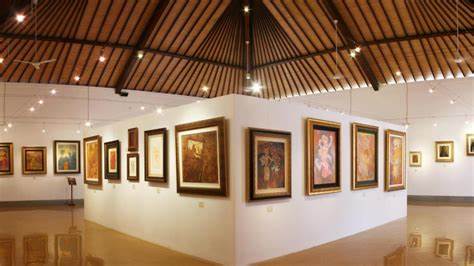
The museum is divided into several thematic galleries, each designed to immerse visitors in a different aspect of Asia-Pacific art. Some of the most notable galleries include:
- Gallery I: Indo-European Artists: Featuring works by European artists who lived in or were inspired by Bali, such as Le Mayeur and Spies.
- Gallery II: Indonesian Art: Highlighting traditional and modern Indonesian art, from intricate batik designs to contemporary paintings.
- Gallery III: Polynesian and Pacific Art: Showcasing masks, carvings, and textiles from Polynesia, Micronesia, and Melanesia.
- Gallery IV: Asian Art: A collection of art and artifacts from across Asia, including Vietnam, Thailand, and Cambodia, reflecting the influence of Buddhist and Hindu iconography.
Each gallery is thoughtfully curated, offering visitors a chance to explore the common threads and unique differences that define Asia-Pacific art.
4. A Cultural Hub in Nusa Dua
Beyond its art collections, the Pasifika Museum serves as a cultural hub for Nusa Dua, hosting a variety of events, exhibitions, and educational programs throughout the year. The museum’s peaceful setting, surrounded by tropical gardens, makes it a perfect place to reflect on the art and take in the beauty of the surroundings.
The museum also features a gift shop where visitors can purchase books, prints, and other souvenirs related to the exhibitions. It’s an ideal spot to find unique gifts or keepsakes to remember your visit to Bali.
5. Why Visit the Pasifika Museum?
For travelers looking to experience more than just Bali’s beaches and resorts, the Pasifika Museum offers a window into the rich cultural and artistic heritage of the Asia-Pacific region. Whether you’re an art enthusiast or simply curious about the history and culture of Bali and its neighboring islands, the museum provides a unique and enriching experience.
The diversity of the collections, from European painters inspired by Bali’s beauty to traditional Polynesian carvings, ensures that there’s something for everyone. The museum’s tranquil atmosphere also makes it an excellent place to escape the heat and crowds, offering a serene environment in which to appreciate the art
The Pasifika Museum in Nusa Dua is more than just an art gallery—it’s a celebration of the deep cultural connections between the islands and nations of the Asia-Pacific region. With its extensive collections and thoughtful curation, the museum provides a unique opportunity to explore the artistic heritage of this vast and diverse region.
Whether you’re a lover of art, history, or culture, the Pasifika Museum offers an unforgettable experience that will deepen your appreciation for the rich tapestry of traditions that define the Asia-Pacific.


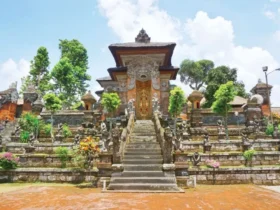
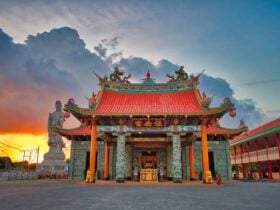
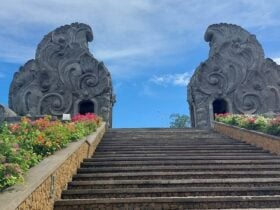
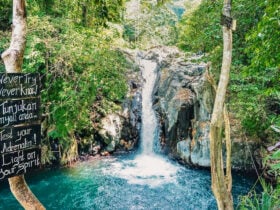
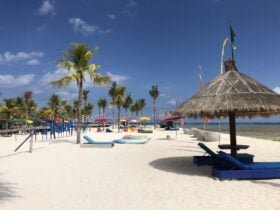
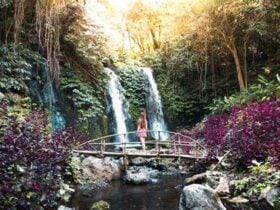
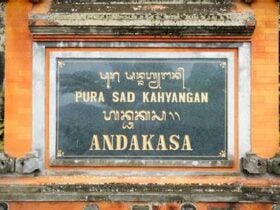
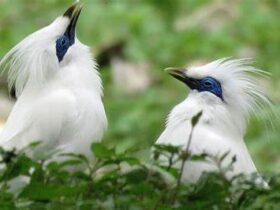
Leave a Review